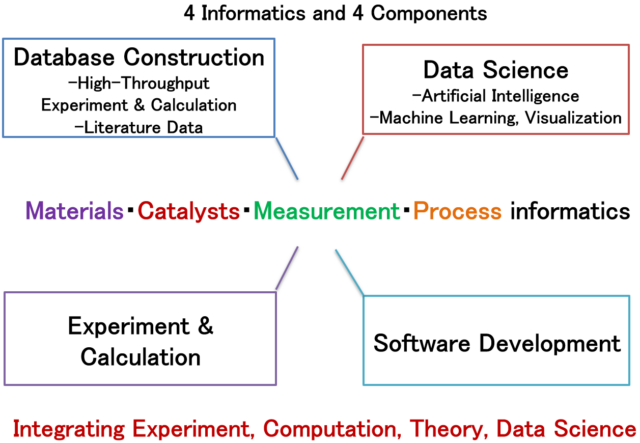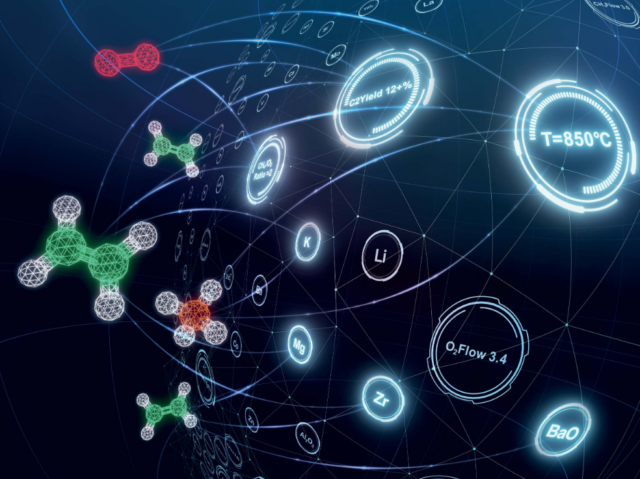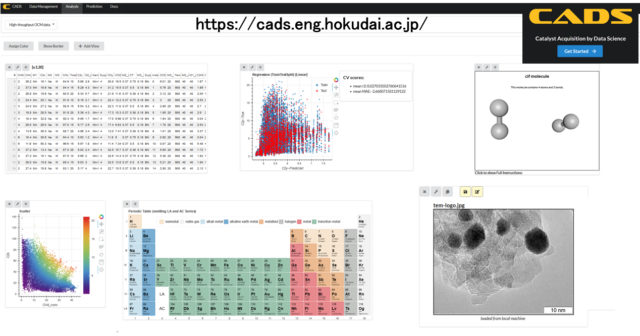Introduction of Research
New Chemistry through Informatics
Materials and catalysts design has been carried out by researchers through trial and error. However, if one looks carefully, it is possible to see that natural phenomena in the world are based on underlying laws when observed as data. Therefore, we are conducting research to design materials and catalysts using data science methods such as artificial intelligence and machine learning based on experimental data, computational data, and literature data that exist in the world.
The ultimate goal is for artificial intelligence to reproduce the experience and inspiration of previous researchers. If this is achieved, not only will the speed of development of unknown materials and catalysts explode, but the concept of chemistry will also change dramatically.
Four Informatics and Four Concepts
In our laboratory, research activities are conducted on four pillars of informatics: materials, catalysts, measurement, and processes.

Database
We have developed our own high-throughput experiments and high-throughput calculations, and are building a database by collecting literature from around the world.
The Fourth Science – Data Science
We design and understand materials and catalysts from scientific data using artificial intelligence, machine learning, and data visualization.
Conventional experiments and calculations
We conduct validation using conventional experiments and calculations.
Software development
To promote informatics, we develop and operate a platform that enables informatics to be practiced with a single click.


Introduction of laboratory
Our laboratory uses uniquely designed experimental equipment and computation servers, all of which we have built ourselves. All computers in our laboratory are Linux-based. Therefore, we conduct our research activities with a complete understanding of the essence of research. We also promote open science and disclose all developed methods, codes, and data to promote transparency of our research and to give back to society.
